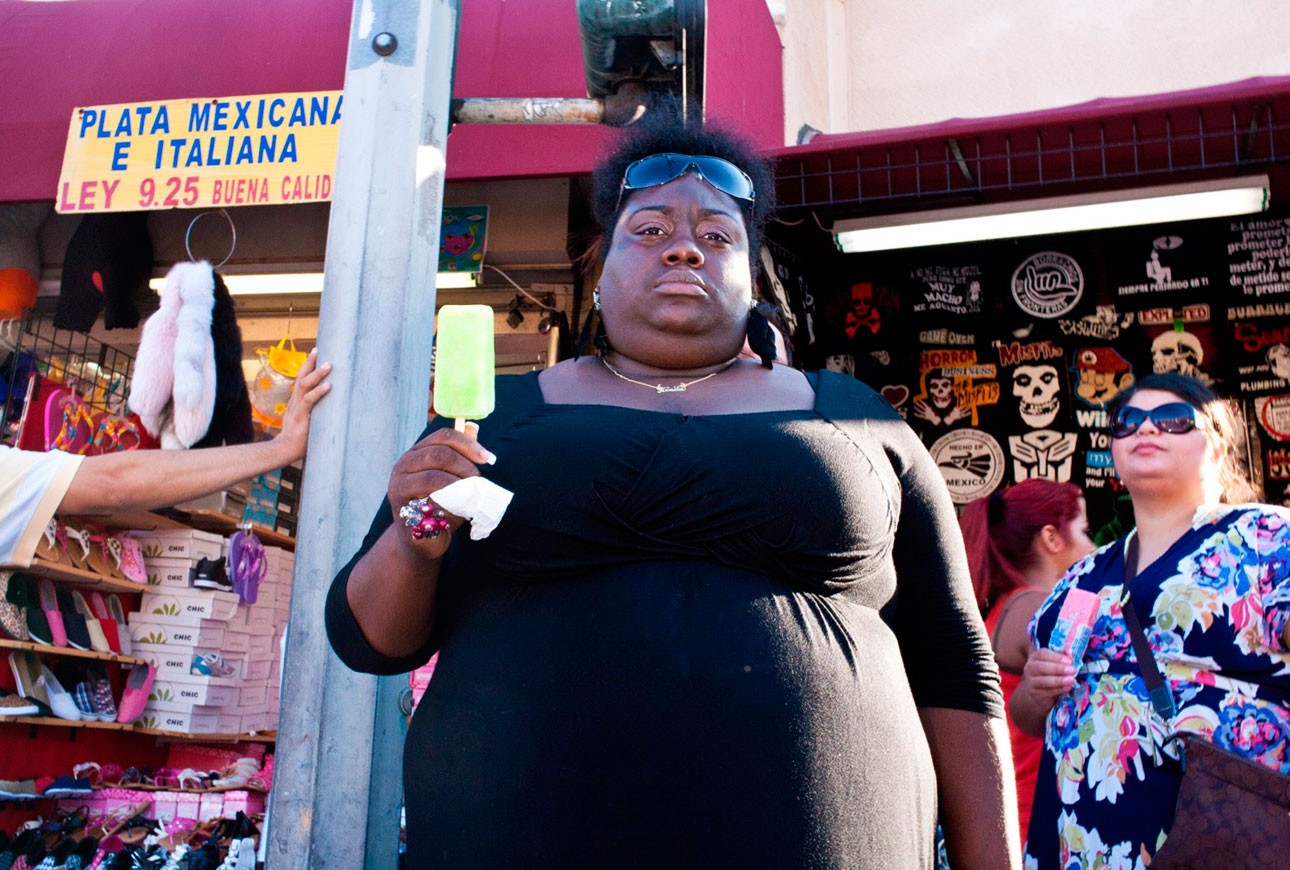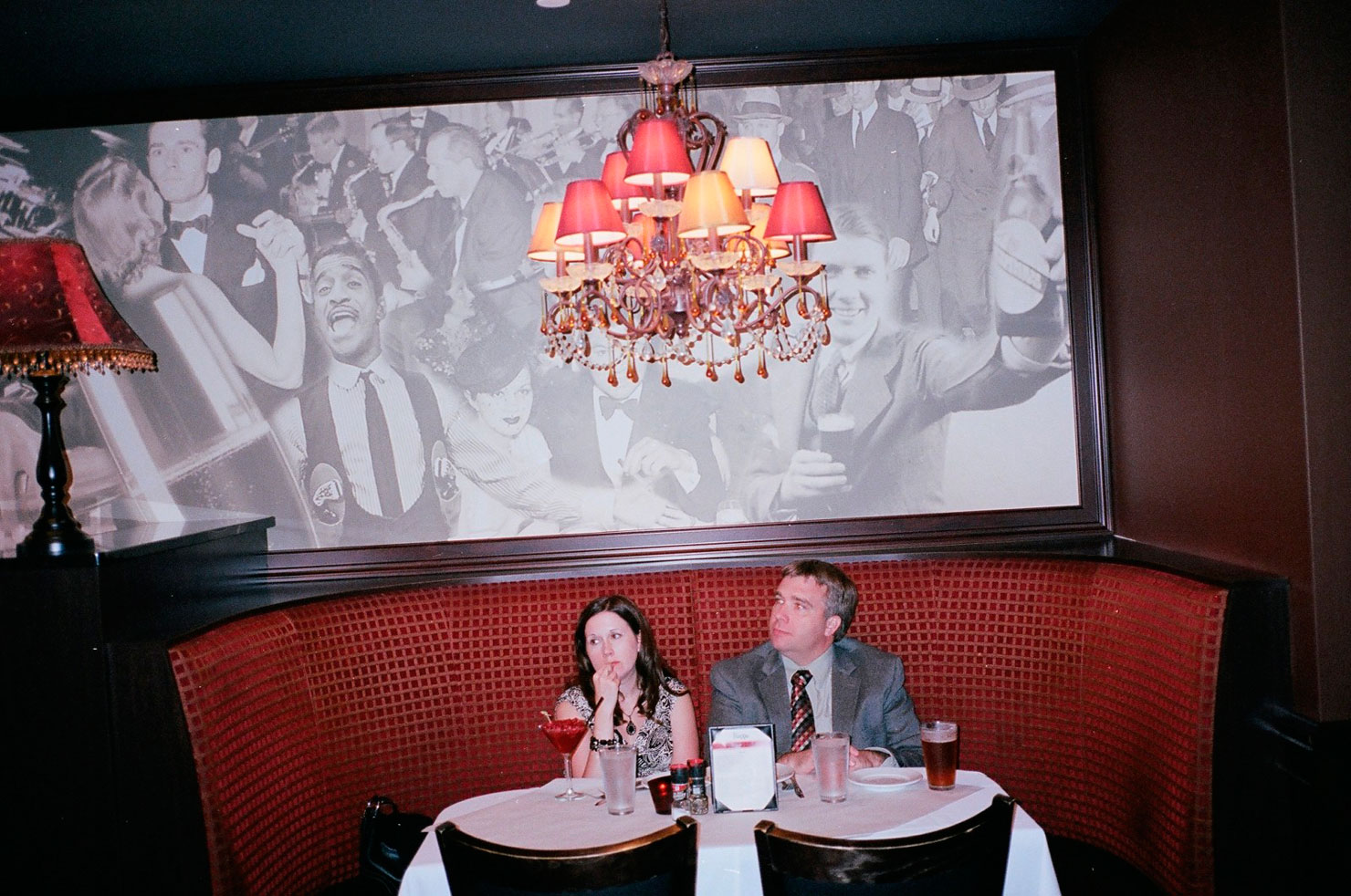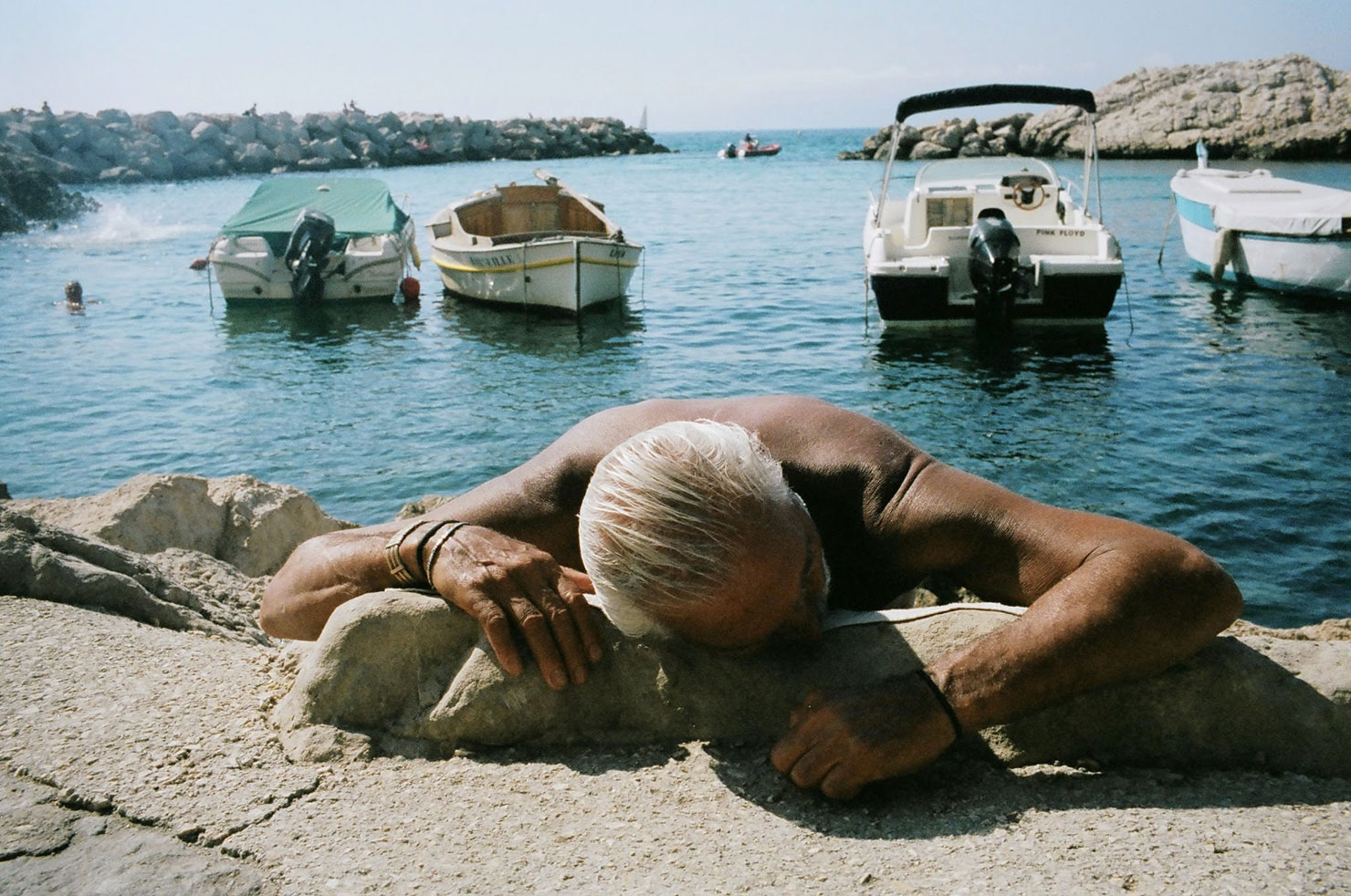
31 Days to Overcome Your Fear of Shooting Street Photography

If I could estimate, I have probably shot over 300,000 street photographs in my last five years in the streets. Out of all of these shots, I have only received around 3 truly negative responses. The first encounter involved an old man grabbing my arm and asking me what I was doing, the second a man in Downtown LA trying to grab my camera from me, and the third being an old Chinese man karate-chopping me in the back of the neck (from a bike) when I took a photograph of him during the night with my flash. Needless to say, I am still alive (and in great health) and haven’t ever gotten punched, stabbed, or killed (yet). Also, if you do the math, 3 really negative experiences out of 300,000 is only .001%– which is statistically insignificant. You are probably more likely to get run over by a car, die in a plane crash, or win the lottery.
I wanted to create a 30-day course that would help people get over their fears of shooting in the streets. Regardless, reading this book alone isn’t going to help you overcome the fear of shooting street photography. You can read a hundred books on how to swim, but you won’t truly learn until you jump into the water.

From the series Suits.
Identify what you’re afraid of. Now write down a list of all the reasons why you are afraid of shooting street photography. Your list is likely to include some or all of the following: the fear of being arrested, physically assaulted, perceived by others as “weird”, getting your camera broken or being yelled at by others. Depending on what country you are, research your laws on street photography and become knowledgeable. I have never heard of any story of a street photographer who has ever received any serious injuries from shooting strangers in the street. And about being seen as weird: this is something that you will have to deal with. In the end, who the hell cares what other people think?
Ask for permission. In my experience, if I asked people to take a photo of them with a smile, around 8 out of 10 people would say yes. Once you are comfortable asking strangers to take their photos, you will begin to find the guts to take photos of them without asking for permission. As long as you show people that you don’t have some sort of malicious intent and that you are harmless, people don’t mind you taking a photo of them.
{“img”: “/wp-content/uploads/2015/10/Kim_02.jpg”, “text”:”From the series Suits.”}
Avoid eye contact. Don’t look directly at people or make eye contact if you wish to be unnoticed when shooting street photography. Pretend like you are looking at sometime else. However, note that this should just be used as an introduction to getting over your fear of shooting street photography.
Shoot from the hip. The advantage of this technique is that people don’t realize that you’re taking a photo of them. First of all, you want to hold your camera with both hands and position it around your waist. Secondly when you are shooting from the hip, you don’t want to look directly at your camera; rather, look elsewhere. Get close, and aim your camera slightly upwards when taking the photo. Experiment with different angles and positions. However, once you start getting more comfortable shooting in the streets, I recommend you to shoot less from the hip. Your hands can never frame and compose a scene as well as your eyes.
{“img”: “/wp-content/uploads/2015/10/Kim_10.jpg”, “text”:”From the series Only in America.”}
Pretend like you’re shooting something else. If you see a person sitting next to an interesting poster, stare intently at the poster from a distance. Then start slowly walking toward them, with your eyes still fixated on the poster. Slowly crouch down, and frame your shot so that the poster and the person are in the frame. Then slowly get up, stare at the poster again, and walk away.
Shoot with headphones on. Although ideally you wouldn’t want to shoot with headphones on (you may miss potential photo-opportunities that may occur around you that can be signaled by sound) it is a good way to “get in the zone” and become more relaxed when out shooting. Not only that, but if people see you shooting with headphones on, they will have the impression that you cannot hear them—and are less likely to object to you shooting them. Also, if people become upset at you shooting them and start bad-mouthing you, you can drown out their negative remarks with the music in your ears.

From the series Suits.
Smile. I remember one day when I was walking home, I saw a rough and tough guy sitting on a bench staring everyone down. I don’t know why, but I instinctively smiled at him and waved hello. I was surprised to see this guy 250-pounds of muscle looking back at me and smiling like a child. He instantly lit up and his kind demeanor warmed me up. When you are out shooting, smile constantly. This way if somebody notices you taking a photo of them, smile at them and say “thank you.” This eliminates their suspicion of you and they have a much higher degree of trust of you as a photographer. Don’t just apply this to street photography, but life in general.
Talk with them afterwards. By talking to people after you shoot them, you make a human connection with them and you can even hear fascinating life-stories that people may have.
Shoot with a small camera (or an iPhone). The bigger your camera is, the more threatening and menacing your camera is going to be. Another suggestion is to use an iPhone when shooting street photography. This is great because you can pretend that you are texting or surfing the web on your phone, when you are actually taking photos of those in front of you. Not only that, but you can carry it wherever you go which will give you more opportunities to shoot street photography.
{“img”: “/wp-content/uploads/2015/10/Kim_12.jpg”, “text”:”From the series Only in America.”}
Shoot with a friend (or a group). It increases your courage by leaps and bounds. The reason behind this is that there is a “diffusion of responsibility” in which you feel more comfortable shooting strangers because the other people are doing it as well. Not only that, but there is a sense of security because if someone makes a big deal of you shooting them, you will have “back-up” from your friend or group.
Look like a tourist. The stereotypical image of a tourist is someone with a big floppy hat, shorts, and tacky flip flops. Nobody seems to mind tourists that much, as they typically have cameras slung around their necks and take photos of the most random things.
Fidget with your camera while shooting. After taking a photo of somebody, look at your camera intently, fumble around with it, and play with the buttons. This way it will give people the impression that you might have just been taking a test shot and not a photo of the subject in front of you. You can also give a confused look for effect.
{“img”: “/wp-content/uploads/2015/10/Kim_04.jpg”, “text”:”New York, 2015.”},
{“img”: “/wp-content/uploads/2015/10/Kim_16.jpg”, “text”:”San Francisco, 2015.”},
{“img”: “/wp-content/uploads/2015/10/Kim_17.jpg”, “text”:”San Francisco, 2015.”},
{“img”: “/wp-content/uploads/2015/10/Kim_18.jpg”, “text”:”Chicago, 2015.”},
{“img”: “/wp-content/uploads/2015/10/Kim_19.jpg”, “text”:”Seattle, 2015.”},
{“img”: “/wp-content/uploads/2015/10/Kim_20.jpg”, “text”:”San Francisco, 2015.”}
Get really close (with a wide-angle prime). There are several benefits of shooting street photography with a wide-angle prime. First of all, you are able to save precious time instead of having to zoom in-and-out to capture the decisive moment. Secondly, because you cannot zoom, it challenges you to get closer to people and capture images that feel much more intimate and personal. Last but not least, prime lenses are much smaller in size than zoom lenses and are thus less threatening to your viewer.
Don’t ask for permission The general definition of street photography is to take photos that are candid and without permission. Asking for permission when shooting your subjects alters the way they react to you and your camera. For example, think about that friend of yours who always has the same pose and smile when you take photos of them.
{“img”: “/wp-content/uploads/2015/10/Kim_09.jpg”, “text”:”Istanbul, 2013.”}
Focus on different body parts. Shoot their shoes, their hands, their legs, and even their hair. People are typically conscious when you take photos of their faces, but don’t mind so much when you shoot specific body parts as it doesn’t make them identifiable in your images.
Shoot at a busy place. If there is a large mass of people around you, it is easier to disappear into the crowd and people are less likely to notice you taking a photo of them. If you live in a more suburban place without much people, drive into the city at a place with a ton of people. Also, feel free to attend carnivals, fairs, and parades that can be full of interesting characters to take photographs of.

Marseille, France, 2011.
Shoot somewhere with few people. And be prepared to explain what you are doing as you cannot simply slip back into a large crowd of people. Calmly explain that you are a street photographer and that you like to capture images of beautiful or interesting people. People might be a bit confused about why you are doing that, but try your best to be honest and genuine.
Go somewhere that makes you feel uncomfortable. Shooting in different places can often take time to adjust to, but you are able to encounter a wider gamut of people from different socioeconomic classes.
{“img”: “/wp-content/uploads/2015/10/Kim_13.jpg”, “text”:”From the series Suits.”}
Prepare to explain yourself In my experience, I have found out that the majority of people don’t mind getting their photos taken—as long as they are assured that you aren’t going to do anything nefarious with it.
Don’t take the photo until they look at you. One technique that Thomas Leuthard uses when shooting street photography is to point his camera directly at somebody’s face and then patiently waits until they turn around to take their image. Therefore, when people look directly at you when you take their photo, you feel a much more human connection with your subjects that is not there when they don’t look at you.
{“img”: “/wp-content/uploads/2015/10/Kim_08.jpg”, “text”:”Istanbul, 2013.”}
Don’t think too much. When it comes to street photography, don’t let “paralysis by analysis” affect you. When I am out shooting and I start thinking too much about how my subjects will react to me, I start getting cold feet. However, I try to keep my mind on other things when I am out shooting (a movie I would like to watch, the emails I have to catch up on, or what to eat for dinner), which prevents me from being self-conscious when shooting on the streets.
Take the first click. Don’t let inspiration be your driving force in shooting street photography. You might be walking outside and feel like a hundred people are looking at you, and you feel your muscles tense, and your heart rate begin to rise. My advice is to break this is to just take the first click.

Saigon, 2014.
Bring business cards with you. If people question what you are doing, simply explain what you found so interesting about them and explain that you are a street photographer and meant no harm. Then give them a business card with your name, contact, website, and even offer to email them their photograph. When you do this, people think that you are professional and not just some random creep taking photographs in the street.
Just walk away. There are some people who you can’t get through to. These are the people that no matter what kind of reason you use with them, they simply won’t listen to you. My advice in these circumstances is to just walk away.
{“img”: “/wp-content/uploads/2015/10/Kim_15.jpg”, “text”:”Los Angeles, 2014.”}
Shoot with a flash. You don’t shoot with a flash in order to scare people or elicit a response, but rather to capture a different sense of energy and mood in a scene. When shooting with a flash on the streets, I walk with a moderately fast speed and try to always keep my eye open for characters—or interesting people that tell a story. Typically, I look for people who have interesting outfits such as ties, unique glasses, colorful outfits, funny expressions, or flamboyant pants or shoes.
In my experience, people notice you using the flash less during the day when you are in the shadows. When you are shooting with a flash at night, you are much more likely to scare people, depending on how attentive people are.
{“img”: “/wp-content/uploads/2015/10/Kim_03.jpg”, “text”:”From the series Suits.”}
Tell them to call the cops. It is a pain in the ass to deal with the cops, but usually one of two things happen. Either you tell them to call the cops, and they keep yelling at you, and end up walking away (you call their bluff) – or – you wait for the cops to come, and they ask what happened. The person tells the story, and then the cop tells you that you have every right to shoot in the streets, and they tell both of you to move on.
Street photography has helped me become a better person. Before shooting street photography, I would always let myself get pushed around by other people. If you have this problem as well, stand up for your rights and stand your ground. Not only will doing this help your street photography, but your own personal life as well.
{“img”: “/wp-content/uploads/2015/10/Kim_05.jpg”, “text”:”San Francisco, 2015.”}
New and best




